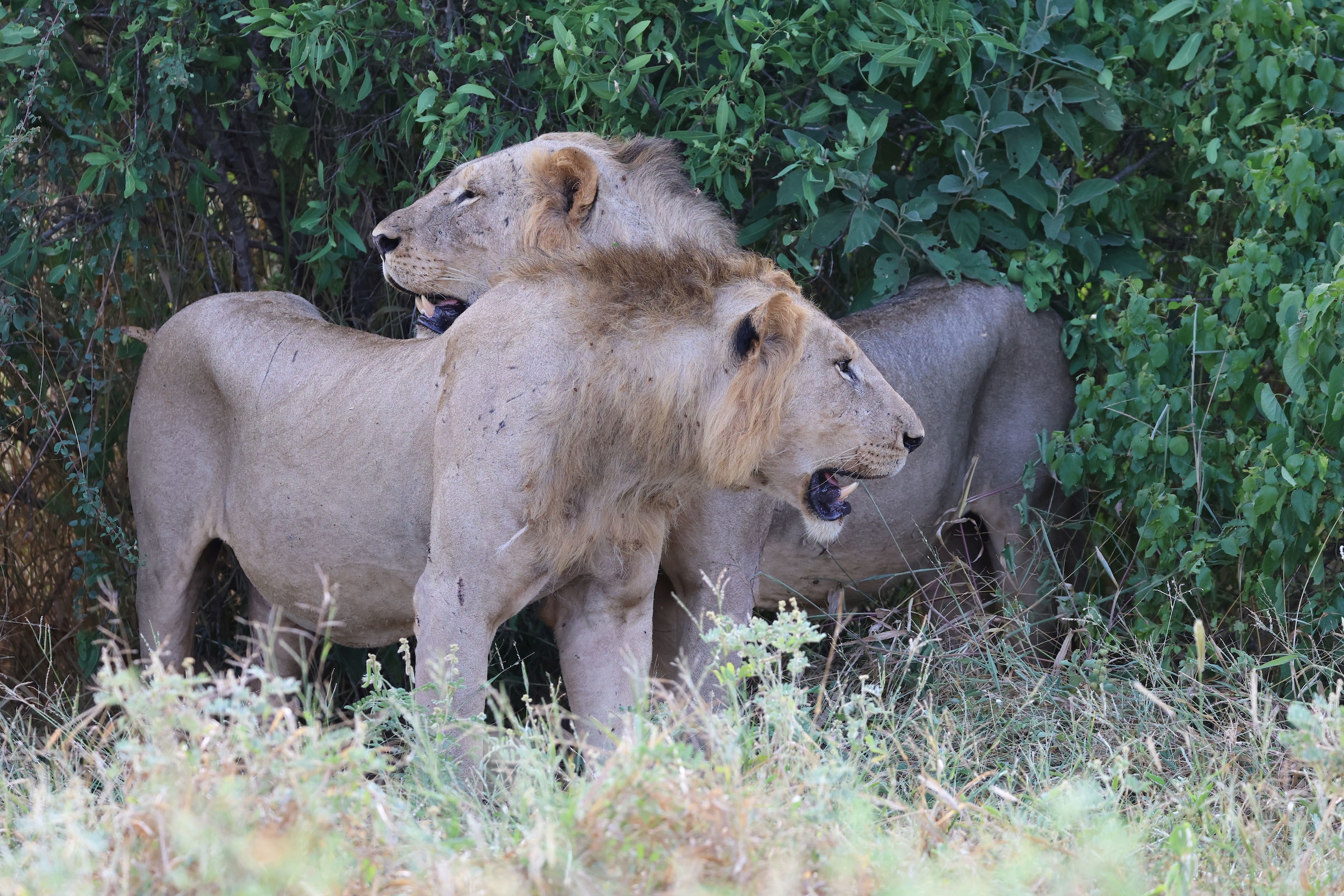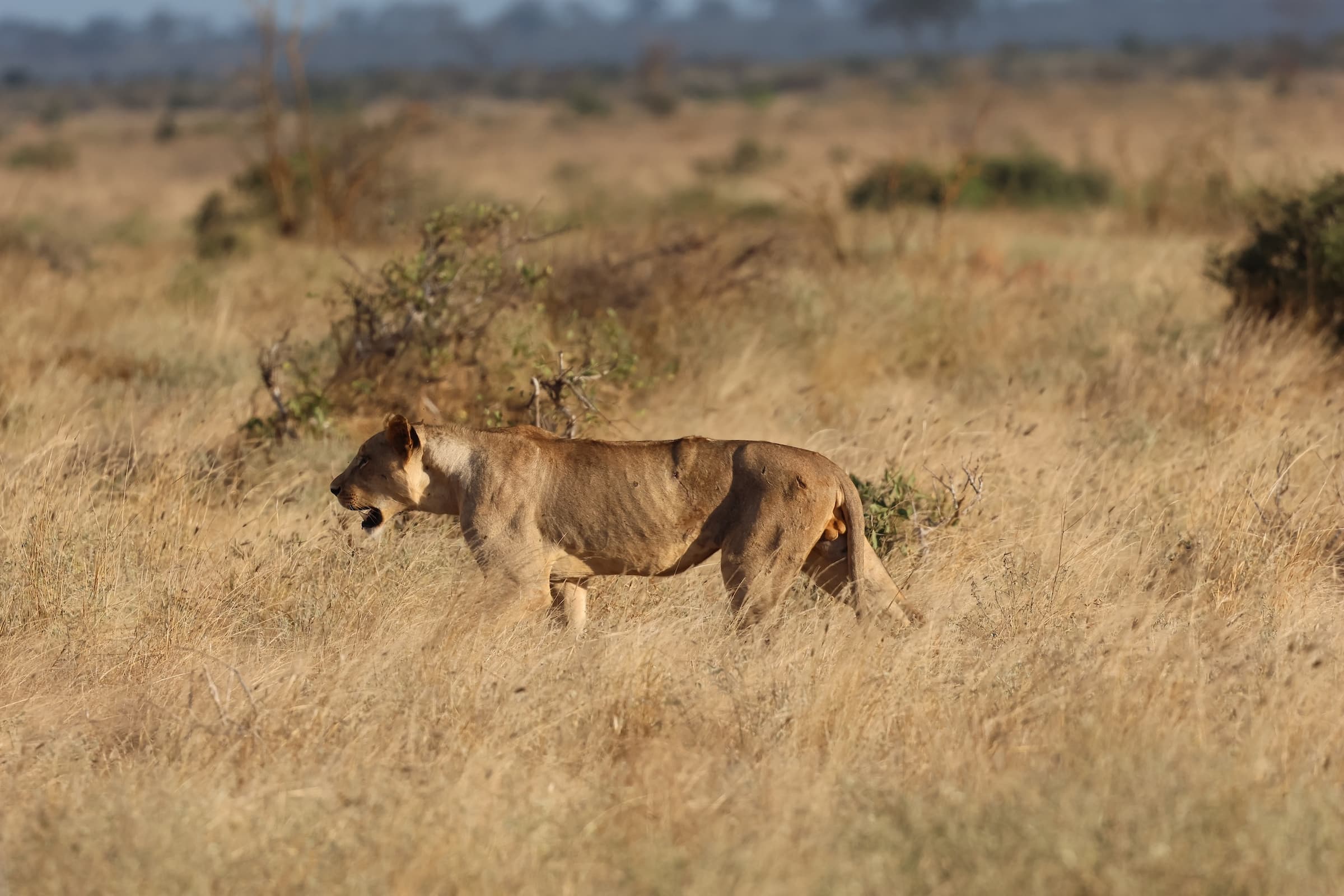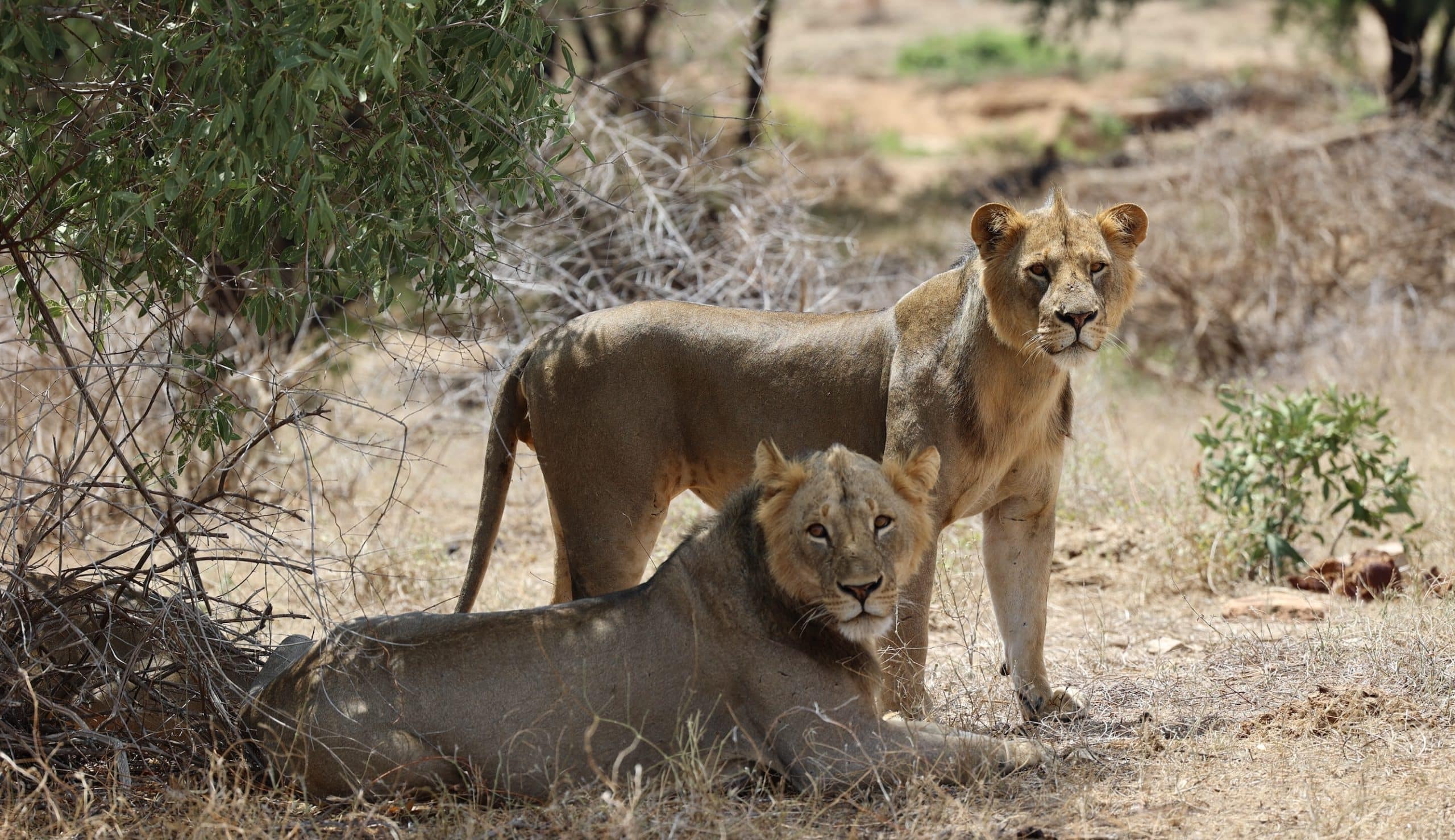One of the most iconic features of the male lion is its mane. Much like a crown, a lion’s mane easily identifies it as the “king of beasts,” but there’s more to a mane than simply adorning a lion’s head.
Manes usually start to develop on young males at around two years of age, tying in with puberty. Much like their coloring, manes development is usually reliant on factors such as environment, weather, age, and health. Manes help male lions intimidate other lions that might challenge them for territory, and also help attract females for mating purposes.
Despite the utility of manes, there are some male lions that never grow a mane at all, or have significantly reduced ones. The most famous of this type are the maneless male lions in Tsavo, Kenya.
Since the lack of a mane was often the result of engaging in battles with other male lions and sustaining injuries that prevented the mane from growing back, it seemed that a lion without a mane is disadvantaged. This is not the case for the lions of Tsavo.
The maneless lions of Tsavo do not have issues attracting females, leading researchers to believe that their lack of manes must be the result of adapting to their environment. Tsavo is known for its hot weather and dense, thorny foliage. Having a thick mane may inhibit a lion’s ability to hunt in this environment, and may also inhibit its abilities to regulate its body temperature in the hot weather.
Tsavo lions also tend to have higher levels of testosterone. Much like how human males with higher testosterone levels experience baldness, the same is true of male lions when it comes to losing their manes.
Though competition for food, mates, and territories is tough, the Tsavo lions serve as testament that the species will find a way to adapt to their physical and social environment.




